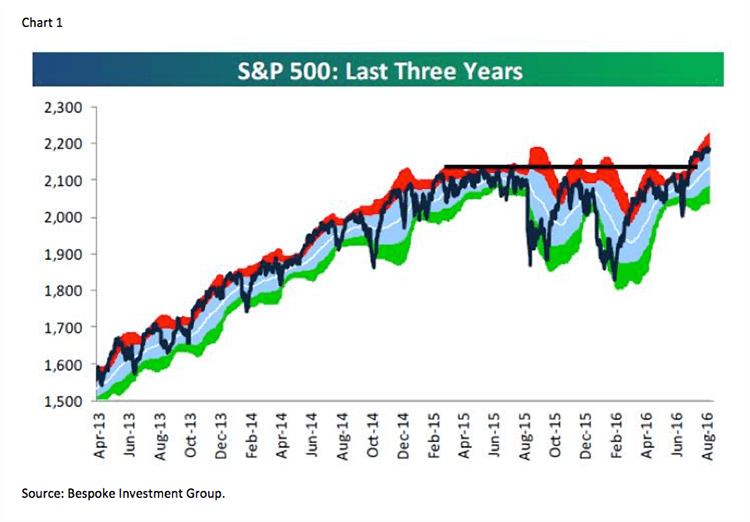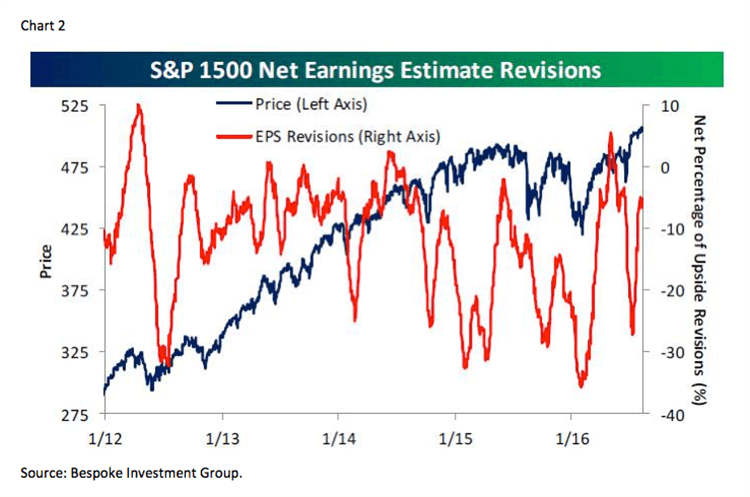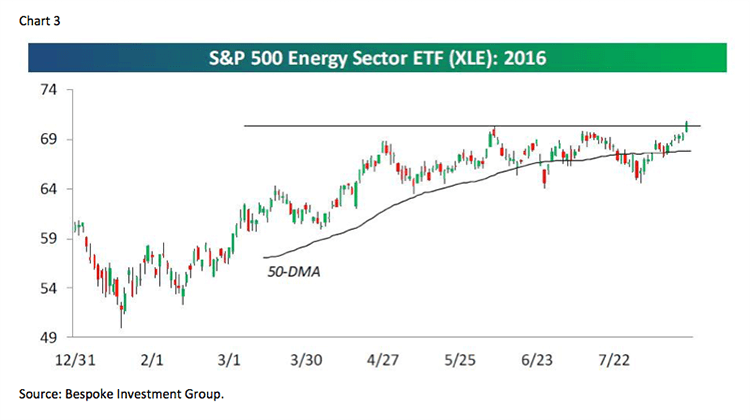by Jeffrey Saut, Chief Investment Strategist, Raymond James
Dear Ben,
I recently read an article that suggested a lower earnings yield may explain why the stock market can continue to go up even though the economy and the S&P 500’s earnings remain sluggish. Moreover, how would you explain the Equity Risk Premium to an investor without a finance degree?
Dear Jeff,
The concept of an Equity Risk Premium (ERP) is critical to the stock market, yet very few people understand the relationship. In essence, the equity risk premium is the return required to invest in the equity of a business above what would be the expected return from a risk free asset (such as a CD or T‘note). The greater the risk, the higher the expected return, and vice versa.
Entrepreneurs understand there are high risks to starting a small business, but the payoff can be huge. An individual who saves enough for a down payment on a house wants to know that 100% of their savings will be available when needed, and may therefore be comfortable accepting the lower interest rate provided by a savings account or a CD. In periods of low interest rates, the risk free return may barely provide any return at all.
Many strategists calculate the ERP for the stock market by taking the earnings yield on the S&P 500 and subtracting the interest rate on the "risk less" 10-year Treasury note. The earnings yield represents the inverse of the Price to Earnings ratio, the most common valuation measurement for the market. At current levels, the S&P 500 trades at a P/E ratio of approximately 16.5 times next year's estimate ($132.76e) for an earnings yield of about 6% (E ÷ P, or $132.76 ÷ 2184 = ~0.06). Subtracting the 1.5% yield on the 10-year Treasury note produces an ERP of 4.5%, slightly below the 5-7% average of recent years.
The lower ERP available today may suggest that stocks are fairly valued when compared to historical equity multiples and fixed income yields. As a result, some experts have suggested that investors may be willing to accept a lower premium on stocks if they are unable to find any other asset classes that produce enough return to justify the risk. This implies the stock market may not be anywhere near as overvalued as many suggest. If so, the stock market could continue to provide investors with attractive future returns for a lot longer than most expect. But remember Jeff, the essence of portfolio management is the management of risks not the management of returns. All good portfolio management begins and ends with this premise.
Ben Graham
While a fictitious letter, the insight that stocks may not be all that expensive is not an unimportant point. And even though our proprietary model is “looking” for a near-term pullback attempt, our longer-term bullish stance remains intact. As we wrote in last Friday’s Morning Tack, “Sir John Templeton said, ‘Bull markets are born on pessimism, mature on optimism, and die on euphoria.’ So study a S&P 500 chart, and note that the upside breakout has come after nearly a two-year consolidation, or trading range (chart 1). Then ask yourself, ‘Are we anywhere near optimism, much less euphoria?’”
Turning to Dudley Do-Right, in this case we are not referencing the Canadian Mountie lionized in the “Rocky and Bullwinkle Show,” but rather the esteemed New York Fed President William Dudley, who said last Thursday (Dudley), "For the first time in quite a while, gains in middle-wage jobs actually outnumber gains in higher- and lower-wage jobs nationwide. . . . I believe this is an important development in the economy, because, if it were to continue, it would create more opportunities for workers and their families who have been struggling up to now.”
Of course those “strengthening economic” comments elicited this hawkish quip from the San Francisco Fed President John Williams (Williams), "If we wait until we see the whites of inflation's eyes, we don't just risk having to slam on the monetary policy brakes, we risk having to throw the economy into reverse to undo the damage of overshooting the mark and that creates its own risks of a hard landing or even a recession.”
B-A-N-G . . . those comments came out after Thursday’s closing bell and caused the 30-year T‘bond to follow the 10-year T‘note out above its 50-day moving average (DMA) early Friday morning (read: higher interest rates). Plainly stocks were paying attention to that interest rate action because the S&P 500 (SPX/2183.87) lost a quick ~8 points Friday morning. The Spoos’ slide took the SPX right down to the 2175 level that we have said, if violated, should lead to further selling. That would be consistent with what our proprietary model has telegraphed for over a week, as it looked for a very short-term trading top.
As for Obamacare, last week Aetna followed Humana and UnitedHealth by announcing it is going to reduce its participation in “public exchange counties” by 70% in 2017. Obviously, something is very wrong causing me to recall what Senator Orrin Hatch said back in 2013 (Hatch), “I will predict that within that year — now I may be wrong on this — but within the immediate future the Democrats are going to throw their hands in the air and say, 'It's not working. It's unaffordable. And we have to go to a single-payer system.’”
To be sure, something’s gotta give, but rather than rewriting the entire Obamacare bill, wouldn’t it be easier just to lower the age for Medicare participation to zero?!
Turning to GaveKal, as most of you know I love the sagacious folks at GaveKal and I own their mutual funds. They have a way of rotating the prism 180 degrees in an attempt to glean net worth-changing insights. They are the ones that first turned me on to the concept of “intangible capital” (Capital), which has led to so many profitable investments for all of us. My friend Steve Vannelli, GaveKal’s lead portfolio manager, is a really smart guy and a great investor. You will get a chance to hear from him, as well as myself, this coming Wednesday when we do a joint conference call to discuss the current “state of the state” and GaveKal’s relatively new GaveKal Knowledge Leaders Developed World ETF (KLDW/$27.08), which is now available on the Raymond James platform (KLDW). The call is at 4:15 p.m. (ET) on August 24th with the dial-in number of (877) 525-8156 and the passcode 60116738.
The call for this week: While there are numerous economic releases this week, by far the key event for the week is Janet Yellen’s speech this Friday (10:00 a.m.) at the Kansas City Fed’s annual Jackson Hole Forum. Her topic will be “The Federal Reserve’s Monetary Policy Toolkit.” Certainly the various markets will put on “rabbit ears” for clues as to what it means for interest rates and consequently stocks. As often expressed in these missives, “Nobody can consistently ‘time’ the markets, but if one ‘listens’ to the message of the market you can certainly decide if you should be playing hard or not so hard.” Since our model targeted the February lows, we have been playing pretty hard. Last week, however, we began playing less hard as our model was calling for a short-term trading top into Friday’s option expiration. We further opined that if the SPX breaks below 2175, more selling should ensue. The quid pro quo is that if the recent intraday high of 2193.81 is taken out to the upside, all downside bets are off. Of course this is merely a finesse “trading call” because our model shows the first point of any real vulnerability comes in mid-/late-September as the equity markets transition from an interest rate-driven bull market to an earnings-driven bull market (chart 2). And don’t look now, but the energy sector is breaking out to the upside (chart 3).
Copyright © Raymond James

















